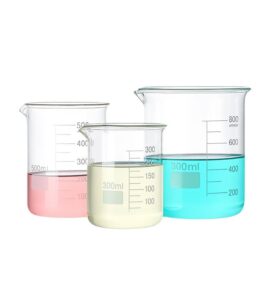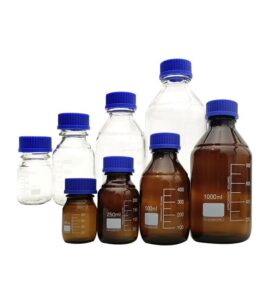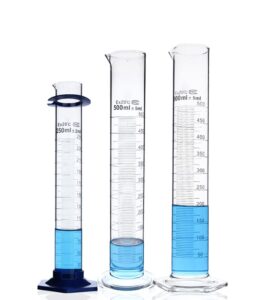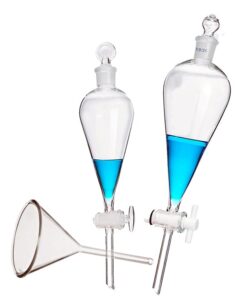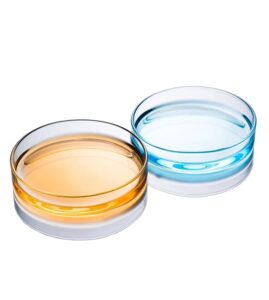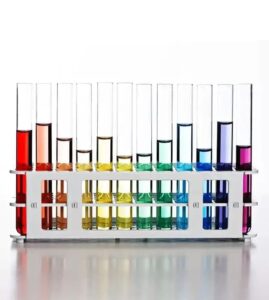When it comes to laboratory work, the sound of glass breaking can be more than just a nuisance. It raises immediate concerns about safety, contamination, and the integrity of experimental results. But what causes lab glassware to break, and what can be done to prevent such incidents?
The breakdown of lab glassware is a significant issue in scientific research. Causes range from thermal shock to improper handling, and the risks involve not just personal injury but also compromised experiments and financial losses.
Understanding and mitigating these risks is crucial for maintaining a safe and productive laboratory environment.
Analyzing Common Causes of Glassware Breakage in Laboratories
In laboratory settings, the breakage of glassware can be a common but preventable issue. Understanding the causes of such breakages is crucial for maintaining safety and ensuring the accuracy of experimental results. Here are some of the primary reasons why lab glassware might break:
- Thermal Shock: One of the most common causes of glassware breakage in laboratories is thermal shock. This occurs when glass experiences a rapid temperature change, causing it to expand or contract quickly. For example, placing a hot glass flask directly on a cold surface or exposing a cold glass container to a flame can lead to thermal stress and eventual cracking or shattering.
- Mechanical Stress: Glassware can also break due to mechanical stress. This includes dropping, striking, or applying uneven pressure to the glass. Clamping glassware too tightly or using equipment that applies uneven force can create stress points, leading to cracks or complete breakage.
- Chemical Stress: Certain chemicals can react with the glass, causing it to weaken over time. This is particularly true for glassware that regularly comes into contact with strong acids, bases, or solvents. Over time, these chemicals can etch into the glass, making it more fragile and susceptible to breaking.
- Improper Cleaning: Improper cleaning techniques can contribute to the weakening of glassware. Using abrasive materials or harsh cleaning chemicals can scratch or etch the glass. Additionally, residues left in glassware can cause reactions in subsequent uses, which can weaken the glass structure.
- Age and Wear: Repeated use of glassware over time can lead to wear and tear. Tiny scratches and microfractures accumulate with each use, which can eventually lead to failure. Older glassware, even if it appears to be in good condition, may be more prone to breaking.
- Inherent Flaws: Sometimes, the glassware may have manufacturing defects such as tiny cracks, air bubbles, or uneven thickness. These flaws can weaken the structural integrity of the glass, making it more likely to break under stress.
- Improper Storage: Storing glassware in an overcrowded space or in a manner where it is prone to being knocked over can lead to breakage. Glassware should be stored securely and in a way that minimizes the risk of accidental impacts.
- Use of Inappropriate Glassware for Specific Experiments: Selecting the right type of glassware for each experiment is essential. Different types of glassware are designed to withstand various chemicals, temperatures, and physical stresses. Using glassware that is not suited for the specific demands of an experiment can lead to breakage.
By understanding these causes, laboratory personnel can take appropriate preventive measures to minimize the risk of glassware breakage, thereby enhancing safety and the reliability of experimental outcomes.
The Risks of Using Damaged Glassware in Lab Experiments
In laboratory environments, ensuring the integrity of glassware is not just a matter of maintaining equipment—it’s a critical aspect of safety and accuracy. Using damaged or broken glassware poses significant risks, which are often overlooked. Here’s why it’s crucial to avoid using damaged lab glassware:
- Safety Hazards: Damaged glassware may have sharp edges that can cut the hands or other body parts of lab personnel. Additionally, compromised glassware can shatter unexpectedly, leading to accidental injuries. Therefore, using damaged glassware poses a considerable safety risk.
- Inaccuracy in Experimental Results: Damaged glassware can impact the accuracy of experiments. For example, surfaces with cracks or impurities can affect the precision and reliability of the experiment. Furthermore, damaged apparatus can interfere with the fluidity of liquids and the uniformity of temperature, thus impacting experimental outcomes.
- Maintenance Difficulties: Cleaning and maintaining damaged glassware can be challenging. If there are residues or impurities inside the glassware, they might be difficult to remove, affecting the lifespan and performance of the equipment. Moreover, damaged glassware can affect the seal and pressure resistance, leading to unstable experimental results.
It is clear that using damaged glassware in laboratories is not just impractical but also hazardous. The implications extend beyond mere equipment failure to potentially compromising the safety of personnel and the validity of research findings. Prioritizing the use of intact, undamaged glassware is a fundamental practice for any responsible laboratory.
Effective Strategies to Prevent Glassware Breakage in Chemical Experiments
In the realm of chemical experimentation, the integrity of laboratory glassware is paramount. Breakage not only disrupts experiments but also poses safety risks. Here are several key strategies to prevent the breakage of glassware during chemical reactions:
- Select Appropriate Glassware: Choose glassware suitable for the experiment’s requirements, paying attention to the material, thickness, and pressure resistance. For experiments that involve high pressure or temperature, opt for robust, pressure-resistant glassware.
- Preheat Glassware: For experiments that require sudden cooling or heating, preheat the glassware to avoid breakage due to large temperature differences. Care should be taken not to overheat, which could deform or soften the glassware.
- Control Reaction Temperature: Control the reaction temperature to prevent damage to the glassware from extreme temperatures. Gradually increase the temperature to avoid sudden heating and cool slowly to prevent rapid cooling.
- Careful Addition of Chemical Reagents: When adding acids, bases, salts, or other chemical reagents to glassware, control the speed and amount to avoid intense reactions or excessive reagents causing breakage. Also, pay attention to the purity and quality of reagents to prevent damage from impurities or contaminants.
- Use Protective Devices: For chemical reactions that generate high temperatures, high pressure, or are corrosive, use protective devices like insulation cups or pressure tanks around the glassware. These can effectively reduce external environmental damage and enhance the durability of the glassware.
- Regular Inspection and Maintenance: Regularly check the integrity of the glassware and replace it promptly if cracks, damage, or softening are found. Additionally, regularly clean and maintain the glassware to remove residues and stains, keeping it clean and hygienic.
- Follow Experimental Procedures: Adhere to laboratory procedures and operate according to prescribed steps. Following these procedures can reduce the risk of breakage due to improper handling.
- Personal Protection: When handling glassware, ensure personal protection to avoid injuries from glass shards or other debris. Also, adhere to laboratory safety regulations for the correct use and storage of glassware.
- Control Gas Pressure: In experiments involving changes in gas pressure, control the pressure to prevent damage to the glassware. Excessive pressure can cause breakage or deformation, while insufficient pressure can create cracks or fissures.
- Mind Storage and Usage Environment: Store glassware in a dry, cool, well-ventilated place, away from direct sunlight and high temperatures. Also, be mindful of the usage environment to avoid contact with corrosive substances or exposure to harmful conditions.
By implementing these strategies, laboratories can significantly reduce the risk of glassware breakage during chemical experiments. These practices are not only crucial for the safety of laboratory personnel but also for the integrity and success of scientific research. Ensuring the proper handling and maintenance of glassware is a fundamental aspect of conducting safe and effective chemical experiments.
Safe Disposal and Handling of Broken Laboratory Glassware: Best Practices
Handling broken glassware in a chemistry laboratory requires utmost care and precision. Implementing the correct safety measures is essential to avoid accidental injuries and environmental contamination. Here’s a comprehensive guide on how to properly deal with broken laboratory glassware:
- Ensure Safety: Firstly, necessary safety measures should be taken while handling broken glassware. Wear lab coats and chemical protective goggles to avoid direct skin contact with glass shards and chemicals. Handle the broken glassware carefully to prevent further damage or injury.
- Clean Up Debris: Use appropriate tools (such as brooms, paper towels, or a vacuum cleaner) to clean up shattered glass pieces, placing them in designated waste containers. Avoid direct contact with your hands to prevent cuts. Ensure that all debris is thoroughly cleaned up.
- Dispose of Chemicals: If the broken glassware contains chemical reagents, pour them into designated waste containers. Avoid mixing different types of reagents to prevent chemical reactions or the production of harmful gases. After disposing of the reagents, rinse the area with water to ensure no residue is left.
- Record Keeping: After dealing with the broken glassware, record relevant information in the laboratory’s logbook, including the name of the equipment, the nature of the damage, the method and time of disposal. This helps track the disposal and handling of laboratory waste, ensuring safety.
- Waste Disposal: Broken glassware and its chemical contents are considered laboratory waste and should be disposed of properly. Segregate waste according to lab regulations and have it collected and treated by a professional waste disposal company. Ensure hazardous waste is not directly discharged into sewers or trash bins to prevent environmental pollution.
- Documentation and Training: If any accidents or injuries occur while handling broken glassware, record the incident and administer necessary first aid. It is advisable to conduct training and education for laboratory personnel on handling broken glassware. Training can include proper handling methods, safety precautions, and emergency procedures to enhance safety awareness and capability.
In conclusion, handling broken laboratory glassware requires adherence to safety-first principles. Proper handling ensures personnel safety and environmental quality. Strengthening laboratory management and education enhances safety awareness and capability, effectively reducing similar accidents. With technological advancements and the emergence of new materials, the future may hold even safer and more convenient methods for dealing with broken glassware and hazardous materials.
Conclusion
In the dynamic and ever-evolving field of scientific research, vigilance in laboratory safety is paramount. This comprehensive guide underscores the importance of understanding and mitigating risks associated with lab glassware. Embrace these strategies to foster a culture of safety and precision in your laboratory. Stay informed, stay protected, and let’s collectively push the boundaries of scientific discovery in the safest way possible.


